Press Release 03/13 New kinds of genetically modified plants and pesticides not being assessed for safety
Christchurch, 22.03.2013 – In a new peer-reviewed paper published by an international team from New Zealand, Brazil and Australia in the prestigious journal Environment International, the researchers Jack A. Heinemann, Sarah Z. Agapito-Tenfen and Judy A. Carman have found that government safety regulators are failing to consider important risks of new kinds of genetically modified (GM) plants and some emerging co-technologies.
These plants are designed to make a form of genetic information called double-stranded RNA (dsRNA). While most existing GM plants are designed to make new proteins, these new GM plants make dsRNA in order to alter the way genes are expressed. Recent research has shown that dsRNAs can transfer from plants to humans and other animals through food. Potentially, they could also be transferred into people by inhaling dust from the plant (e.g., breathing-in flour from GM wheat while baking with it), or by absorption through the skin.
The same technology is being developed for spraying directly onto plants as a type of pesticide spray. Another proposed use is to feed dsRNAs to insects such as bees to try to control bee viruses.
While RNA is a normal component of all cells, in dsRNA form it can have effects that depend on the species and tissues exposed to it. According to Adjunct Associate Professor Judy Carman of Flinders University and a co-author of the paper: “The dsRNA molecules in GM plants may work exactly as intended and have no other effects. On the other hand, they may have effects that were not predicted, both on their target organisms and other organisms such as people and wildlife. We won’t know until we do thorough assessments, and these assessments have not yet been done.”
The authors collectively reviewed three food or environment safety regulators with jurisdiction in three countries, Australia, Brazil and New Zealand. The regulatory decisions were on three different kinds of GM plants that do or may produce new dsRNA molecules and were intended for use as food or animal feed. The authors recorded their advice to the regulators and the responses from the regulators.
“Each regulator found reasons not to ask the product developers to specifically test for effects from dsRNA, and thus relied on assumptions rather than testing to determine safety” said co-author Sarah Agapito-Tenfen, a doctoral student at the Universidade Federal de Santa Catarina in Brazil.
“To our surprise, we found that there are no internationally agreed protocols or even guidelines for how to conduct a thorough and proper risk assessment on products with new dsRNA molecules in them” said Prof. Jack Heinemann of Canterbury University in New Zealand, member of ENSSER and the study’s lead author. To fill this gap, the authors have developed the first formal assessment procedure for dsRNA-based products, whether they are living genetically modified organisms or agents that are sprayed onto plants.
Contacts for further comment
Jack Heinemann: jack.heinemann@canterbury.ac.nz; +64 3 364 2500
Dr. Jack A. Heinemann is professor of Molecular Biology and Genetics in the School of Biological Sciences, and Director of the Centre for Integrated Research in Biosafety, at the University of Canterbury, New Zealand.
Sarah Agapito: sarahagro@gmail.com; +55 48 37215336
Sarah Z. Agapito-Tenfen has a master degree in Plant Genetic Resources from the Universidade Federal de Santa Catarina, Brazil, and is currently a PhD student there.
Judy Carman: judycarman@ozemail.com.au; +61 408 480 944
Dr. Judy Carman is an adjunct associate professor in Health and the Environment, School of the Environment at Flinders University in South Australia and is also Director of the Institute of Health and Environmental Research. She has qualifications in biochemistry and epidemiology.
The Centre for Integrated Research in Biosafety (INBI, previously NZIGE) was founded in 2001 as a research centre at the University of Canterbury. The Centre is dedicated to public good science with a focus on research in biotechnology of relevance to those with limited or no access to science research funding.
The European Network of Scientists for Social and Environmental Responsibility (ENSSER) brings together independent scientific expertise to develop public-good knowledge for the critical assessment of existing and emerging technologies. The objective of ENSSER is the advancement of public-good science and research for the protection of the environment, biological diversity and human health against adverse impacts of new technologies and their products. ENSSER advocates benign
and peaceful use of scientific discoveries and technological developments, while expanding diverse approaches to assess their utility and safety in society.
Environment International is an Elsevier journal ranked in the top 4% of environmental sciences journals by impact factor; A* by Excellence in Research for Australia, its highest standing; and A1 in the Brazilian/Capes ranking, also the highest standing.
